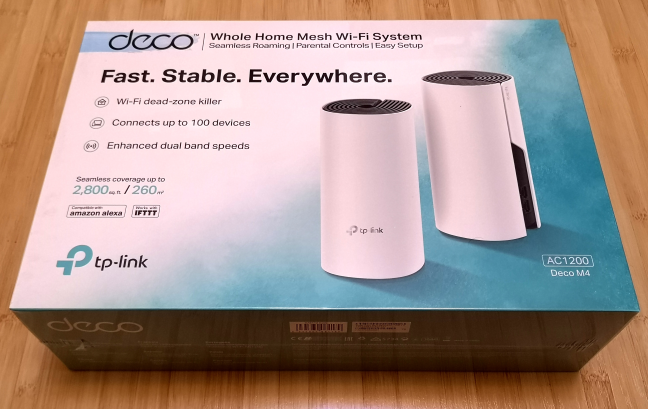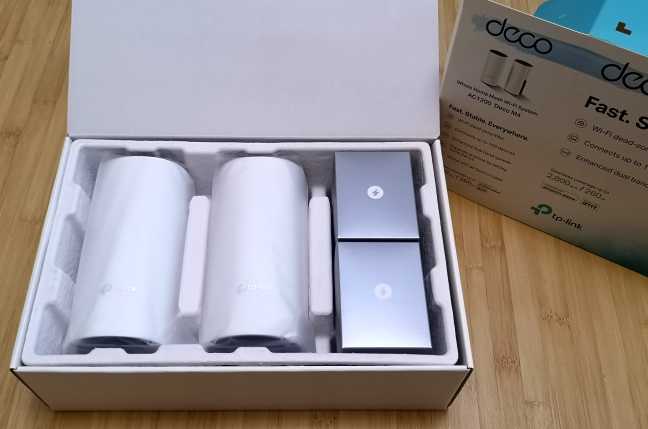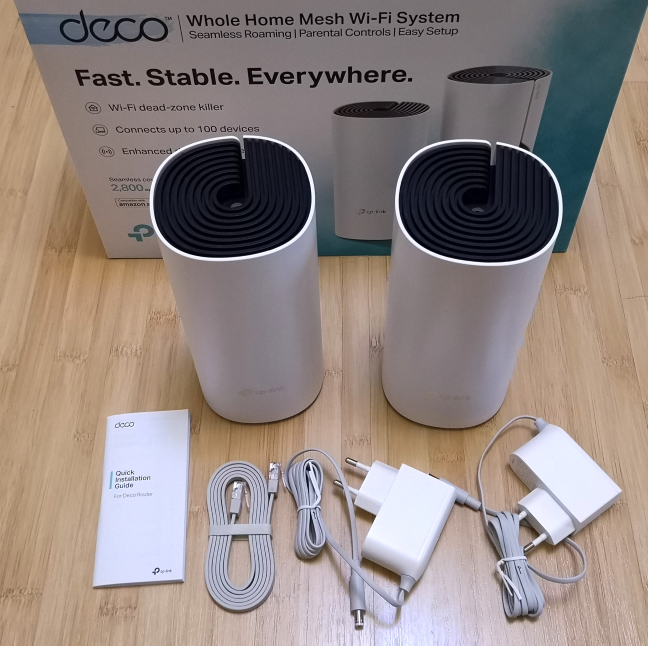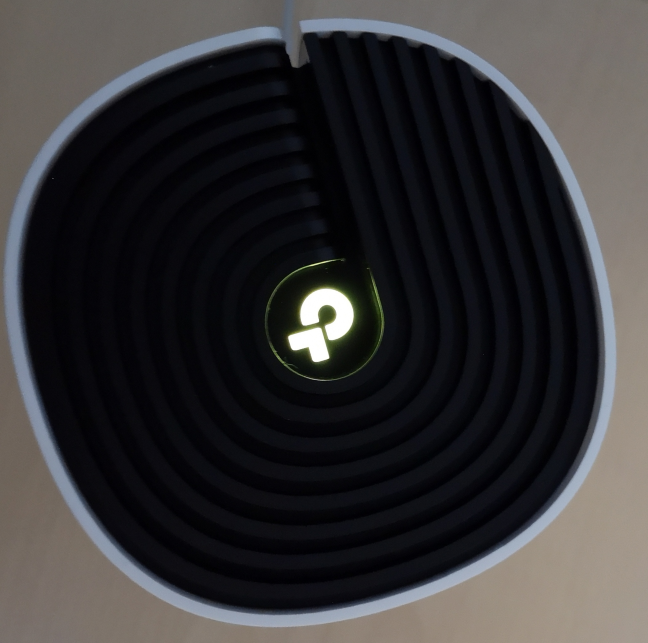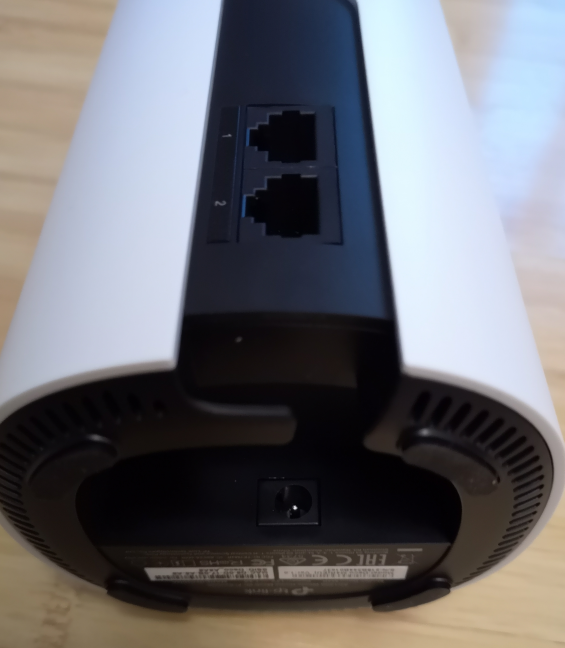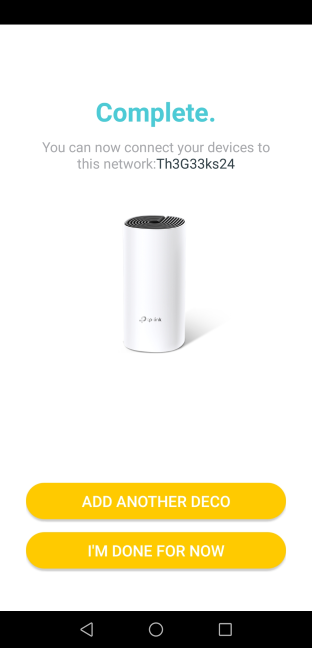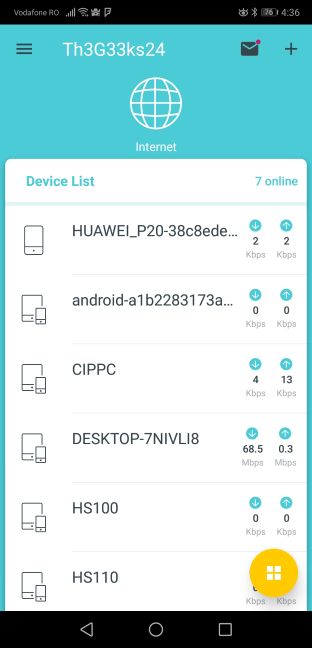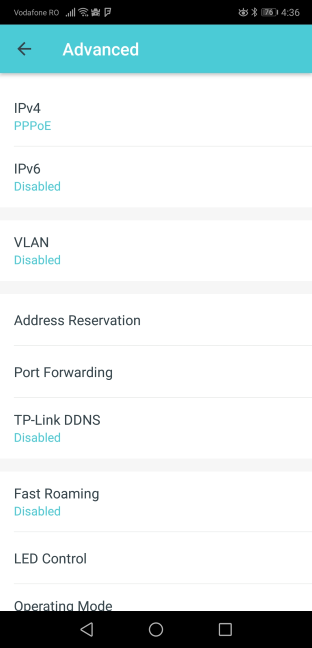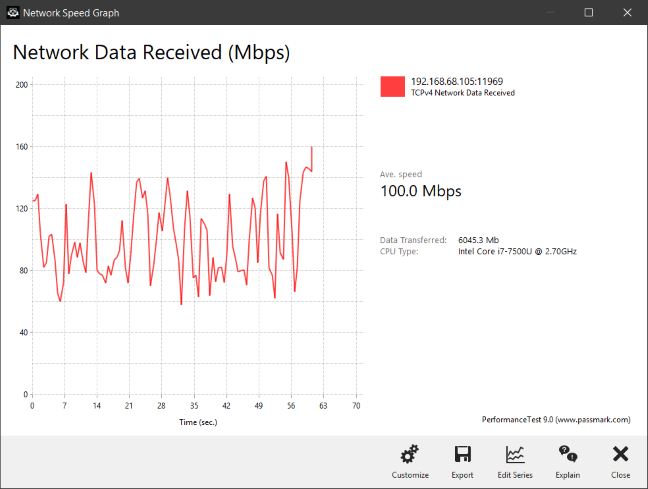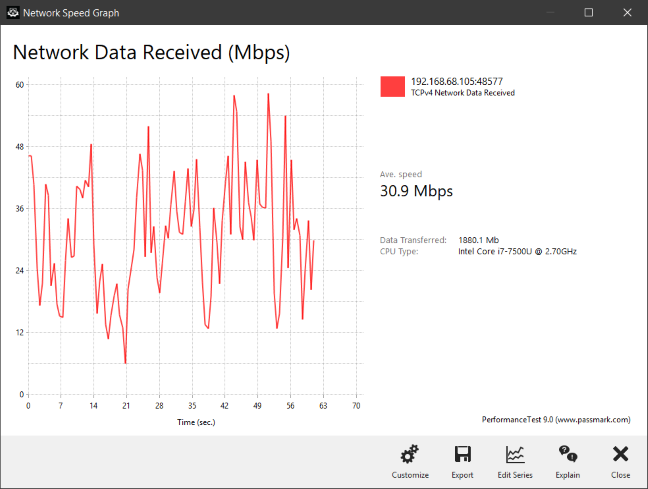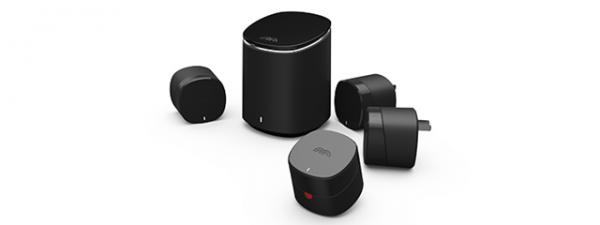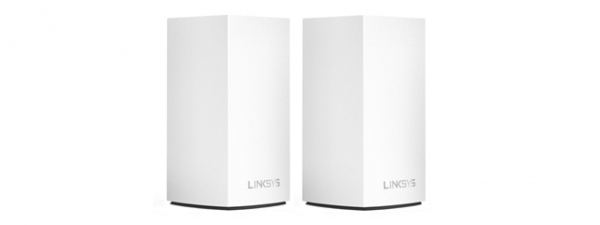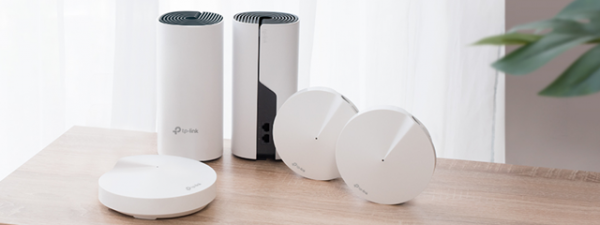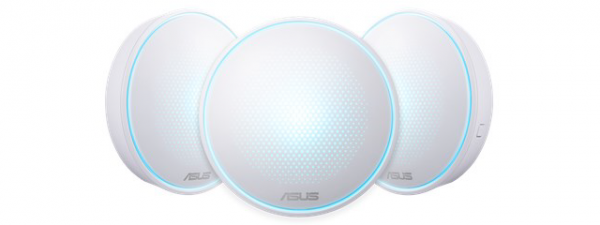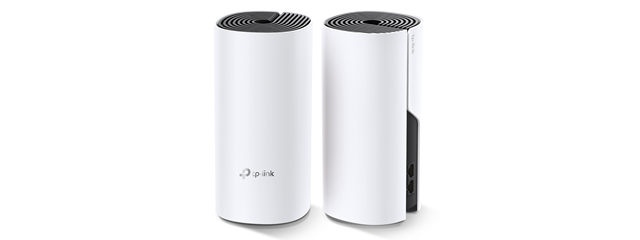
TP-Link is preparing the international launch of a new mesh WiFi system, called Deco M4 or Deco M4R. It is their most affordable mesh WiFi system yet, and it plans to compete with other brands that have aggressive pricing like Tenda. It packs solid hardware, and also fewer features than previous models. If you want to know more about the most affordable mesh WiFi from TP-Link, read our world-premiere review for Deco M4:
TP-Link Deco M4: Who is it good for?
This whole-home mesh WiFi system is a suitable choice for:
- Homes that benefit from using a mesh WiFi system for broader wireless coverage
- Parents who desire excellent parental controls to protect their children online
- People who want to remote control their mesh WiFi system from a mobile app
- Owners of Alexa powered devices who want to voice control their home network
- Users who want to extend their existing Deco mesh WiFi system with an affordable Deco station that costs less than previous models
Pros and cons
TP-Link Deco M4 has the following positives:
- Excellent maximum speed
- Easy to set up through the TP-Link Deco mobile app
- Affordable pricing for a mesh WiFi system
- Pleasant design
- Useful parental controls that are easy to use
- It can be used in tandem with other Deco devices, even if they are from a different model
- It is integrated with Amazon Alexa and IFTTT (If This Then That)
There are also some weak spots to consider:
- It does not offer a web-based interface for administration
- The variability of wireless network transfers needs some improvement
- It has fewer features than other Deco systems, to make up for the price difference
- It is not able to fully utilize 1 Gbps internet connections, even though it is better than Deco M5 in this regard

Verdict
Deco M4 or M4R is the most affordable mesh WiFi system from TP-Link. This model is designed to compete with aggressively priced mesh systems from other brands. For the lower price, you get good hardware and excellent speed for WiFi, but also fewer features than more expensive Deco models. One important strength is the fact that you can mix Deco M4 with other Deco models, and use it as an affordable way of extending the coverage of your existing mesh WiFi network. Deco M4 offers great value for the money, and with a few improvements on the firmware side, it might become the top-performing affordable mesh WiFi system that you can buy for an affordable price.
Unboxing the TP-Link Deco M4 whole-home mesh WiFi system
At launch, TP-Link Deco M4 (or M4R) is sold in packs of two devices. The company is going to launch variants with three or one Deco M4 stations too. The packaging used for this mesh system is similar to others in the Deco family. This means that it looks beautiful, and the unboxing experience is pleasant.
When you take the cover off, you see another box. Inside you have the devices that make up the TP-Link Deco M4 mesh WiFi system. Alongside them, there are several small boxes with accessories.
When you unbox everything, you get the following items: the Deco M4 stations, their power adapters, an Ethernet cable, the warranty, the license for the firmware, and the quick setup guide.
The unboxing experience offered by TP-Link Deco M4 is pleasant. Everything looks great, and it is nicely packaged. You get all the accessories you need to set everything up.
Hardware specifications and design
The design of the Deco M4 stations is different from previous Deco models. They are tall and thin, similar in size and looks to traditional PC speakers. The stations have a size of 3.6 x 7.5 inches or 90.7 x 190 mm in width and height. They also weigh around 28 ounces or 800 grams, which makes them light. On the top, you see the TP-Link logo and the ventilation grids. The logo lights up in different colors, to show you want the Deco M4 is doing. For example, if you see it red, it means that it is disconnected from the internet.
On the back of each Deco M4, there are two Ethernet ports with a speed of 1 Gbps, and on the bottom, you can find the power jack and the Reset button. There are also four small rubber feet so that the devices are stable when you place them on flat surfaces. Unfortunately, the Deco M4 stations cannot be mounted on walls.
Each Deco M4 has a quad-core Qualcomm Atheros QCA9563 processor running at 750 MHz, 128 MB of RAM and 16 MB of storage space for the firmware. There are two internal dual-band antennas per Deco M4 unit, that offer 2x2 MU-MIMO wireless transfers, using the 802.11ac Wave 2 networking standard. This system offers a maximum theoretical bandwidth of 300 Mbps for the 2.4 GHz band and 867 Mbps for the 5GHz band. To connect to your smartphone and other mobile devices, TP-Link Deco M4 uses a Bluetooth 4.2 chip.
If you want to know more about the official specifications of this whole-home WiFi system, go to this page: TP-Link Deco M4 Specs.
Setting up and using the TP-Link Deco M4 whole-home mesh WiFi system
The setup and administration of the TP-Link Deco M4 mesh system are done using the TP-Link Deco mobile app for Android and iOS. You also need a TP-Link Cloud account, which you can create here or from the app. One downside is the lack of two-factor authentication, to increase the security of your account. We hope that TP-Link is going to add this security feature in the future. After you register or log in with your TP-Link Cloud account, you can start the setup process. The setup wizard is easy to use, and it starts with choosing the Deco model that you own. You then get all the necessary setup instructions, and you are asked to set the following elements: the location of the Deco M4 that you are setting up, the details of your internet connection, and the name and the password for the wireless network that it is going to be broadcast. Deco M4 works with the following types of internet connections: Dynamic IP, Static IP, and PPPoE.
Once the first station is set up, you can add the remaining devices. All you have to do is choose where they are placed. The app helps them copy the settings you have made for the first device. One thing to keep in mind is that the discovery of Deco M4 stations is made using Bluetooth. You need to keep Bluetooth turned on, on your smartphone or tablet. Otherwise, the setup process does not work.
When you are done setting up the Deco M4 mesh system, the mobile app automatically checks for firmware updates and, if any are found, it asks you to download and install the latest version. You should perform the update, as newer versions of firmware improve performance, fix stability problems and security vulnerabilities. The firmware updates take some time and involve a restart of all the stations in the system.
On the main screen of the TP-Link Deco mobile app, you see the list of devices that are connected to the network. You also have a couple of shortcuts and menus. In the bottom-right corner of the screen, there is also a yellow button with four white squares in the middle.
When you tap on it, you get access to all the main features and configuration options. There are not many advanced settings available, and everything can be set up with ease. You can set features like port forwarding, DDNS, LED control, notifications, the Parental Controls, the Managers of the system, and the operating mode. The features list of the Deco M4 is slimmer than that of more expensive Deco systems, and more advanced users might miss the antivirus protection available on the Deco M5, for example.
All the settings in the Deco mobile app are nicely explained so you should have no issues in setting up and configuring the mesh WiFi system. We connected about twenty devices to the network, and we enjoyed a stable signal and good speeds in all the rooms of our test apartment. We connected desktop PCs, laptops, tablets, smartphones, smart plugs, smart bulbs, an Xbox One console, and a wireless printer. All of them connected to the network without problems. We were also able to share content through the network, without issues.
One downside that is not going to be appreciated by advanced users is the fact that TP-Link does not offer access to a web administration user interface, as is the case with other mesh systems. This means that you are stuck with only the basic settings offered by the mobile app.
An important novelty is that Deco M4 is compatible with other Deco mesh WiFi systems. You can use it to extend an existing mesh system, made with Deco M9 Plus, Deco P7 or Deco M5 stations. It seems that TP-Link is developing a new strategy of improving their firmware so that all their mesh systems are compatible with each other and consumers can mix and match them as they want. We like this approach, and we can't wait to see it made a reality for all Deco models.
When transferring data through the network, we also looked at the variability of network transfers on both the 2.4 GHz and 5 GHz band. We noticed a relatively high variability of TP-Link Deco M4 when transferring data on the 2.4 GHz band. Here is a transfer made on a laptop, in a room that was separated from the central Deco M4 station by one wall. More expensive mesh systems can provide a smaller variability of wireless transfers.
When we moved to a room separated by two walls from the main station, the average speed dropped, and the variability increased.
Similar variations were noticed on the 5 GHz band, and we think that TP-Link should improve this situation in future firmware updates so that Deco M4 offers a flawless user experience to its users.
We are pleased with TP-Link Deco M4 and what it has to offer. We liked how easy it was to set up, how it looks and the features it offers through its mobile app. The only downside is that Deco M4 offers wireless transfers that have higher variability than other mesh systems, and this needs improvement in future firmware updates. Also, the list of features is slimmer, when compared to the more expensive Deco systems, to make up for the price difference.
If you want to know more about the speed of TP-Link Deco M4, how it fared in benchmarks and what extra features it bundles, go to the second page of this review.


 19.12.2018
19.12.2018 